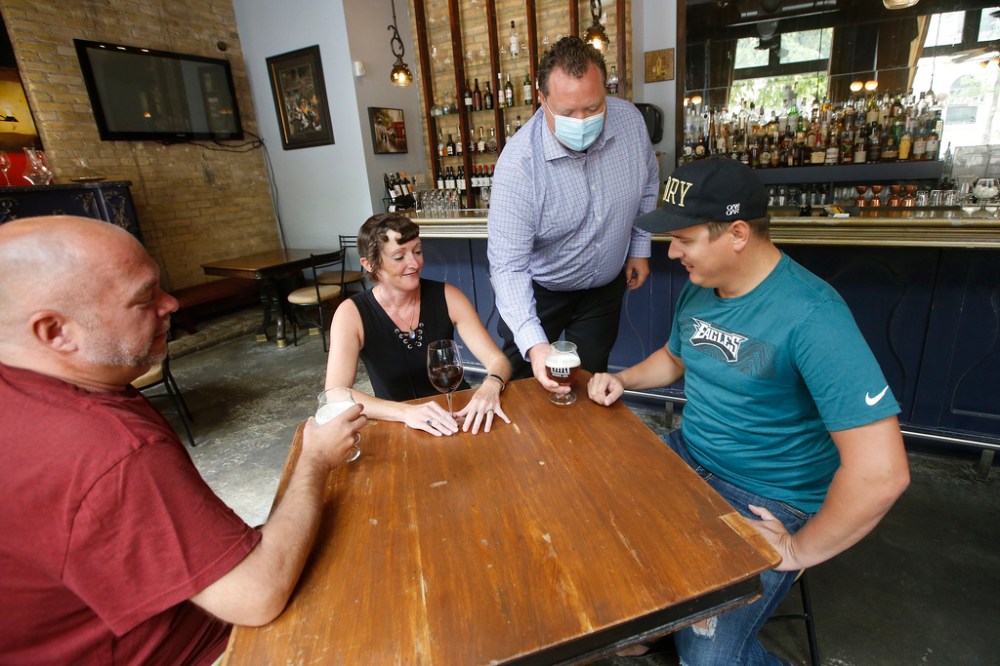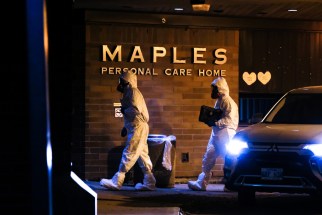Roussin delivers grim — but realistic — message on further reopenings
Read this article for free:
or
Already have an account? Log in here »
To continue reading, please subscribe:
Monthly Digital Subscription
$0 for the first 4 weeks*
- Enjoy unlimited reading on winnipegfreepress.com
- Read the E-Edition, our digital replica newspaper
- Access News Break, our award-winning app
- Play interactive puzzles
*No charge for 4 weeks then price increases to the regular rate of $19.00 plus GST every four weeks. Offer available to new and qualified returning subscribers only. Cancel any time.
Monthly Digital Subscription
$4.75/week*
- Enjoy unlimited reading on winnipegfreepress.com
- Read the E-Edition, our digital replica newspaper
- Access News Break, our award-winning app
- Play interactive puzzles
*Billed as $19 plus GST every four weeks. Cancel any time.
To continue reading, please subscribe:
Add Free Press access to your Brandon Sun subscription for only an additional
$1 for the first 4 weeks*
*Your next subscription payment will increase by $1.00 and you will be charged $16.99 plus GST for four weeks. After four weeks, your payment will increase to $23.99 plus GST every four weeks.
Read unlimited articles for free today:
or
Already have an account? Log in here »
Hey there, time traveller!
This article was published 25/01/2021 (1779 days ago), so information in it may no longer be current.
Manitobans may have to get used to the current level of restrictions for awhile — unless there’s a significant drop in COVID-19 cases and hospitalizations over the next few weeks. That’s the message chief provincial public health officer Dr. Brent Roussin gave Monday as he repeated several times what could happen if we reopen the economy too soon.
“There’s no reason to think that if we open things up again to where we were in October that we would get a different result this time,” he said.
It was a bit of a grim message, but it was realistic.

Bars, restaurants, gyms and retail outlets were all open in October, with some limits. People could socialize in each other’s homes, team sports were allowed, and indoor and outdoor gatherings were limited to 10 people.
After COVID-19 case numbers soared to 300-400 a day and intensive care units were operating at close to capacity, Winnipeg went into code-red restrictions Nov. 2, followed by the rest of Manitoba 10 days later.
It took 10 weeks to get case numbers low enough to loosen some restrictions. However, Winnipeg’s test positivity rate — while half of what it was in the fall — is still over six per cent. (It remains stubbornly high above 10 per cent provincewide, mainly because of soaring cases in northern Manitoba).
Hospitals have rebooked some elective surgeries, which were cancelled to make room for COVID-19 patients. But there were still 272 COVID-19 patients in hospital Monday, including 30 in ICU. Conditions have improved, but only marginally.
The question is, if the province reopens the economy to the level it was in October (after current restrictions expire next month), would cases rise again to the same levels? Roussin seems to think so. He says he has no intention of repeating what the province went through in November and December.
“We know at that level of opening, we are on a trajectory to overrun our health-care system, to cause a lot of hospitalizations, a lot of deaths to Manitobans, and so we need to be very cautious moving forward,” he said.
It’s a message he repeated four times Monday, reminding Manitobans that they’ve “been there before.”

So, what would it take to get bars, restaurants, gyms and other places of business open again in February or March, even with limited capacity? A combination of dramatically lower case numbers and increased hospital capacity would be a good start. The province wouldn’t open everything at once — they’ve made that clear. But under the right conditions, there could be some incremental easing.
That would depend on how well Manitobans follow public health orders and how effective the province’s testing and contact tracing is.
One of the challenges for public health officials in reopening is they don’t always know where transmission is occuring. The province has data on where people frequented before testing positive, but they often don’t know where the infection took place.
That makes it difficult to decide what to reopen and what to keep closed.
“If somebody (who tested positive) was at work and then was at a retail setting and was at another location, all those locations would be listed as potential acquisition sites,” said Roussin. “When you have a high rate of a community-based transmission, it’s really difficult to pinpoint.”
What they do know is that prolonged, indoor contact where masks are not worn is how COVID-19 tends to spread. That makes places like bars and restaurants, where people gather indoors for prolonged periods (and don’t wear masks while they’re eating and drinking), higher risk. It doesn’t mean those businesses can’t operate safely. It simply means the risk factor is higher than in other public places, where people mingle for shorter periods of time and where masks are mandatory (such as retail).

The province will likely use those principles to decide what part of the economy could reopen next.
If numbers fall far enough over the next few weeks, that would be a welcome debate to have.
tom.brodbeck@freepress.mb.ca

Tom has been covering Manitoba politics since the early 1990s and joined the Winnipeg Free Press news team in 2019.
Our newsroom depends on a growing audience of readers to power our journalism. If you are not a paid reader, please consider becoming a subscriber.
Our newsroom depends on its audience of readers to power our journalism. Thank you for your support.







